Ruud van Empel is a photographer who obtains its images pasting together many different photographies, obtaining huge collages that however mantain a very photorealistic look. In this way Ruud van Empel recreates the dreamy and colorful world of his imagination, a northern or tropical forests, surreal offices, where he places his environmental portraits.
Although the issues addressed are very different, as the aesthetic impact, Ruud van Empel has an approach that particularly interests me, because I’m currently exploring similar opportunity, trying to take the best of the digital tools available today. Photocollage is one of the most powerful and interesting of these instruments. For this reason I have contacted him and we had the opportunity to exchange a few words about his work.
Fabiano Busdraghi: In your work you take an individual picture for every fragment of your image, every flower, every leaf, every insect. After you use all these photos to assemble the various parts and create the final image.
From a purely technical point of view this allows you to optimize every part of the resulting picture, you can photograph detail with the best light, perfect focusing and depth of field. Your are able to take every possible shade of green of vegetation and any nuance of flower colours. The resulting images are also high resolution and allow you to obtain very large prints, maintaining a quality otherwise reached only by shooting with a view camera.
How much is this formal perfection important in your work?
Ruud van Empel: The fact that all the photo’s have a high resolution is of no importance to me, i often have to blur the photo’s because it is all to sharp and looks unnatural because of that.
I assemble the work to have control over the whole picture, because i want to re-create reality in a better way.
Fabiano Busdraghi: In any case, is your use of several photography the response to a need for total control on the picture? In addition, building an image as a multitude of fragments that assembled build up a new whole, how impact one’s vision of the world?
Ruud van Empel: I build up my pictures because i am not satisfied with taking just one picture, for me that is mostly interesting from the historical point a view (it captures a moment that is history afterwards) so i create my own world in photorealism, that is how i see it, my imagination translated into photography.
Fabiano Busdraghi: The editing and image manipulation are born with photography. The same day, however, is born also the disagreement that still divides into two camps critics, philosophers and photographers. To make a long history short, on one hand there is who sees photography as a reproduction of reality, and eventually says that any external intervention makes the image non photographic. On the other hand there is who sees photography as personal expression, with those who say that without external interventions photography may not be a work of art.
Personally, I think that photography could embrace both these ideas, and photographers of both schools of thought have produced beautiful images. But is not the same for everyone, expecially for people who belives in the reality of photography.
People believe in the reality of photography but not in that of painting, which gives a huge advantage to photographers. Unfortunately, however, even the photographers believe in the reality of photography.
Duane Michals
Since some years for example, one of the best and well-known Italian photographers, Gianni Berengo Gardin leads a fierce battle against digital retouching and image manipulation. While this is understandable as far as journalism is concerned, I am astonished by certain reactions from the world of artistic photography, which should be much more open.
What do you think about this dichotomous division of photography? Does it happen to hear someone say that your pictures are beautiful but not “real photographies”?
Ruud van Empel: The opinions are indeed divided about this subject, some people say my work is absolute photography because I photograph and montage everything, so it is in the line of photography. Others say this is contemporary art, and that is also because of its size, I sometimes make very large pieces like World#17 (300 x 100 cm) and because this works different on this large scale it is being experienced more as art than photography.
You could call it photo-art.
Fabiano Busdraghi: The painting references are very important in your images. As well as a clear citation of naif painters like Henri Rousseau, your pictures remind me Renaissance master works, while at the same time remaining very modern. How important is the pictorial tradition in your work? Who are the authors who have particularly inspired you?
Ruud van Empel: As always, there are so many, my whole life i have been looking at art and this builds up your own personal databank, deep in your brain all these images are somehow preserved and out of that a certain taste for art results i guess.
Artist that were important to me are: Otto Dix, Mike Disfarmer, Norbert Ghisoland, Lucas Cranach, Georges Melies, Walter Spies, Edvard Munch, Federico Fellini, Saul Steinberg, Cindy Sherman e Tadanori Yokoo
Fabiano Busdraghi: A lot of contemporary art is purely conceptual and gestural. The formal aspect, if it matter, is often antiaesthetic. Your photographies, as well as being innovative, surreal, mysterious, as well as they establish a dialogue with the audience, are also quite beautiful. Can you talk about the importance of aesthetics in your job? Do you believe that the time has come to rediscover beauty? Do you ever get a critique of your images because they are “too beautiful”?
Ruud van Empel: What is crazy about this question is the fact that beauty has been a taboo in modern art for such a long time, it was seen as weak to make beautiful pictures, but in fact it is very difficult to create real beauty.
When I choose the subject of innocence i wanted to show it’s beauty, innocence is beauty, and that is important to understand and not to forget.
So that is one of the important reasons that my images are beautiful, because of this subject.
Another reason is that I am tired of cynical and ironical images, or just ugly images that are strange and not understandable, we have seen so much of that in contemporary art the last 30 to 40 years, I feel I needed to do something different.
Fabiano Busdraghi: Yes, I absolutely agree on this principle, it is time to see something new.
But let’s go back a moment to your way of working.To obtain images combining various heterogeneous elements, requires a lot work and is really time consuming. In art, especially contemporary art, the complexity of the technique does not really matter. But photography always was concerned with difficulties of implementation and technical complexity. Images obtained through long and difficult process often seem to have an added value. Long manipulation obtained in the darkroom were exposed with pride. Today when in a few seconds you can achieve the same result with a Photoshop filter, nobody thinks to those prints as works of art. In your case, are you interested only in the final result, and run through the collage work is the only possible way to get it? Or in the process of collage do you find your personal aesthetic, an intrinsic motivation?
Ruud van Empel: To do collage is necessary for me to express my idea, as I mentioned before, I am not satisfied with taking just one picture, there are always to many imperfections, so I need to stage everything but even that is limited, and does not guarantee a perfect image.
Now in Photoshop there are new possibilities that enable me to almost reach perfection in the composition and colour, and I work with that in my own way and that is personal.
I work with my imagination and try to get that into photo-realism. absolute perfection you can not get in this technique because everything is a montage, photographed separately, so things look a bit strange, and that also gives it a personal feeling.
Fabiano Busdraghi: Many of your work represents children immersed in a natural world without space and time, a forest of dreams, a paradise on earth. This is an invitation to a return to a primordial and pure state of the existence? The series “Word” suggests a kind of universality that goes beyond skin colour and borders of states. Is indeed racial tolerance another of your messages? How important are the social themes in your work?
Ruud van Empel: For me it is not important, it is the same for me to use a black child as a white child, they are both innocent, there is no real difference between them, and I thought that was normal to think like that, I thought everybody thought like that and it is strange to find out that some people don’t like that I am showing dark people, I sometimes get hate-mail and such things, unbelievable!
This social theme is more big than I thought.
Fabiano Busdraghi: Can you say a few words about one of the pictures that accompany this interview?
Ruud van Empel: World #20 is inspired on one of my own childhood photographs, when I was a kid I had to wear a suit with a tie and short trousers, I was supposed to look like a young gentleman but off course I only wanted to play wildly in the gardens and fields around our house.
So it is funny to see a young boy all dressed up in a suit, and I translated this to dark children in tropical forest, in detail you can see a marking on his left knee, there is a little wound from playing to wildly but for the rest he is looking as a perfect example of a nice and good child.
Fabiano Busdraghi: In the past you have worked as a designer, films maker and you are currently working on some sculpture. Is photography your means of expression or you switch indifferently from a media to another? Do the various aspects of your work interact with each other, or are separate?
Ruud van Empel: I like photography and I like sculpture, so I try to work in those disciplines, other kinds of expressions in art like film or oil-painting are not interesting for me I found out by experience in the past.
There is interaction between my photography and my sculpture, I have the same subjects and I am trying to visualize the same symbols.
However, my sculptures are still in a experimental stage.
Fabiano Busdraghi: Can you tell me about a contemporary photographer you especially like, and why you love his work?
Ruud van Empel: I like very much the works of Cindy Sherman, because she is also working in series, and taking a different subject every time, while always using herself as a model. This is very special I think and over the years it never gets dull, she remains fresh, doing new experiments and with very good results. Her Clown series is again a masterpiece, her work gets better and better. I like that she is always making an image of just one person, a big portrait and with so many variations.
Fabiano Busdraghi: Just some question on your personal taste. What book are you currently reading? What music listening? What are your favourite movies?
Ruud van Empel: The book that I am reading is a biography of the Dutch film director Paul Verhoeven. The music I am listening at the moment is Billy Holiday. Favourite movies, there are so may but it go’s from Director’s like Ingmar Bergman, to Fellini, Pasolini and Marco Ferreri, Claude Faraldo, Bertrant Blier, Jacques Tati, Stanley Kubrick, David Lynch, Bert Haanstra, Francis Ford Coppola, Michael Powell and Werner Herzog.


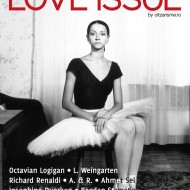
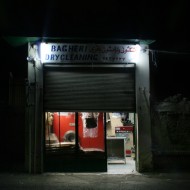
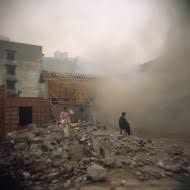
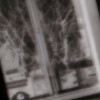
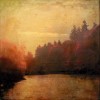





























Complimenti per l’Intervista. Bravo l’autore ed interessanti gli scatti.
Ed ancora più interessante, se mi consenti, il tuo tentativo di fare, in lingua italiana quanto JM Colber, ad esempio, fa su Conscentious.
Bravo F!
Ciao Massimo e grazie per la visita.
Il paragone con Conscientious di Colberg è molto lusinghiero. Rispetto a lui però preferisco scrivere meno, ma approfondire di più ogni articolo. Questa è una delle principali linee guida di CameraObscura. Articoli lunghi, completi e approfonditi.
Sto cercando di trovare una soluzione efficace per scrivere in diverse lingue, e pubblicare così anche la versione originale delle interviste, ma per il momento ho dei problemi tecnici che non riesco a sormontare.
Ciao ciao e ancora grazie
Ciao Fab,
come vedi son finalmente entrato in CameraObscura.
Complimenti per l’intervista: domande intelligenti, impaginazione ottima (odio quando una foto di cui si parla nel testo te la devi andare a cercare).
Apprezzo molto questo tuo modo di far conoscere la fotografia contemporanea.
ciao ciao,
mm
Ciao Fabiano,
mi sembra che utilizzi wordpress, giusto? Dai un occhio al plugin “polyglot” che dovrebbe rispondere alla tue esigenze.
Massimo
Grazie massimo del consiglio.
Polyglot è un plugin carino, ma purtroppo, come altri plugins simili tipo Babel, è pensato più per la traduzione di un unico post, e non di un sito intero. Non supporta i tag multilingua, non permette di filtrare il post per ottenere un pdf solo nella lingua corrente, e soprattutto non nasconde i post che non hanno traduzione.
Quest’ultima è la cosa più difficile da ottenere. In pratica, la maggior parte dei plugins multilingua sono efficaci se traduci quasi ogni post in tutte le lingue. Se manca la traduzione di un post stampano qualcosa del tipo “nessuna traduzione per questo post”. CameraObscura sarà principalmente in Italiano e solo occasionalmente in altre lingue. Sarebbe quindi opportuno che il loop wp mostri unicamente i post della lingua corrente.
L’unico plugin che si comporta in questo modo a mio sapere è Gengo. Purtroppo però lo sviluppo è fermo da alcuni mesi, la versione 2.2 è solo parzialmente supportata e non è compatibile con wp 2.3. Visto che questo plugin modifica pesantemente wp ho paura di avere infiniti problemi con gli upgrade successivi di wp. Inoltre solito problema con i pdf e i tag.
Il plugins migliore in assoluto che ho trovato per il momento è Language Switcher. Supporto tag multilingua, filtro dell’output degli altri plugins, documentazione eccellente, aggiornatissimo, etc. Però solito problema che mostra tutti i post.
Un’altra soluzione sarebbe quella di fare un blog indipendente per ogni lingua. Uno quello che è CameraObscura adesso, un’altro per esempio en.www.co-mag.net e via dicendo. È molto facile in questo modo ottenere tutto quello che desidero, l’unico problema è che quando si cambia lingua riesco a trovare si finisce sempre nella homepage dell’altra lingua, non mi viene in mente nessun modo semplice per mostrare se sono disponibili traduzioni del post corrente.
A tuo avviso, è un problema? O sarebbe preferibile avere una lista di post con “nessuna traduzione disponibile” e di tanto in tanto un post tradotto come fa language switcher?
ciao e grazie per il consiglio
f
Grazie per esser passato!!
..e continua così!.. un mare di informazioni utilissime 😉
Fabiano,
sul mio blog personale ho adottato un approccio molto semplicistico: ho “taggato” con POST in italiano, quei posti che sono *SOLO* in italiano…. Non il massimo ma pratico. Certo, eliminino, su di essi, i lettori inglesi. Altrimenti l’unica alternativa è gestiere due blog in due lingue…. Ma è una fatica immane!
Massimo
I think this is totally kitch, and terrible…almost perverted 🙁
He seem to be interested in naked children.
He mention Cindy Sherman, she is great, what she does is art, but they have nothing in common at all.
I feel sick looking at his pictures, they are really odd. His explanation doesn’t make sense….His first exhibition with the children dark room with an open door with light coming in can explain soemthing about what is in his brain and why.
You can also subscribe to this post comments RSS feed.